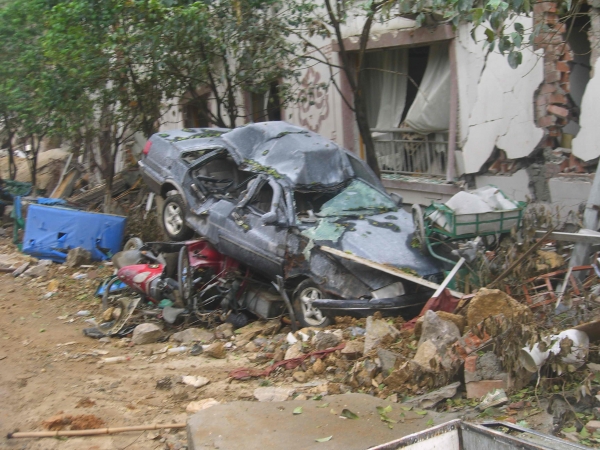This is my third daily blog from the 10th World Urban Forum.
Today has not been a disaster! Far from it, there have been some really good stories to hear at the World Urban Forum. But I want to put the theme of disasters at the heart of this blog. In yesterday’s blog I mentioned the World Bank Report from 2016 that calculated that 26M people each year are pushed into poverty following a natural disaster, because they don’t have the networks and know-how to manage the crisis. Today I picked up a copy of a paper by Steve Matthewman and Hugh Byrd that is extremely critical of the post-disaster reconstruction of Christchurch after the earthquakes. They argue that, while „Build Back Better“ is the mantra, the reality in Christchurch was „a textbook case in how NOT to build back better“,
Christchurch’s problems began when it was constructed by European settlers. The local Maori people rolled their eyes in bewilderment at the choice of the site, which was on a swamp, on a flood plain, at sea level and nestling on the junction of two tectonic plates. In short, Christchurch was always a disaster waiting to happen. „Build Back Better“ is one of those glib phrases that so often seem to substitute for serious policy analysis. What is „better“ and who decides? Matthewman and Byrd reject the notion cherished by some planners and designers that a disaster of this magnitude provides a blank canvas by clearing away the cluter of old infrastructure nd uses. Instead the authors describe disaster situaions as „highly complex“, where a combination of competing interest groups, inadequate information and time pressures combine to make decision making very difficult.
Specifically in Christchurch, a bottom-up consultation on how to rebuild, led by the local council, seems to have been sidelined as central government moved in. The outcome is that the city plan is not in line with preferences eexpressed by residents, but has also seen the rebuilding stalled. The citizens wanted a „compact,liveable eco-city“ but the government’s preference was for large anchor projects and letting the market decide. Yet the Cathedral „remains a ruin. The surrounding city centre…awaits development. Construction of anchor projects like the Convention Centre have not been completed“. There are other unresolved issues about insurance claims, long term housing development and provision of sports facilities.
The warning is that politicians love big projects (I write as, after a decade of austerity has closed youth centres, libraries, swimming pools etc. the UK Prime Minister is talking up construction of a bridge to connect Scotand to Northern Ireland). But big projects also require, and so benefit financially, big companies. There are some important ethical issues here for planners and other built environment professionals who are likely to be caught on both sides of the line when such issues become contentious. „Serving the public interest“ is just as bland and evasive as „Build Back Better“ as an explanation for deeply political choices.
So it was that in another session at the WUF, I asked a question about the ethical risks that lurk within an enthusiastic rush by planners to embrace the panoply of smart city technologies. Yes there can be benefits but there are risks too. Increasing concern is being expressed about the power given to tech‘ giants and their ability to catch and exploit every movement of a mobile phone. While the session chaired by RTPI President Sue Manns took a positive approach, asking how „PlanTech“ could help deliver the Sustainable Development Goals, any application of the precautionary principle would also ask whether there were ways in which PlanTech could be used by vested interests to hinder delivery of the Goals? To cite just one concern, might omnipresent CCTV cameras, observing what may be ambiguously public space that is privately owned, be used to exclude „undesirables“?
The lack of planners and other built environment professionals in many countries is also a threat to achievng the SDGs. Research done by Built Environment in the Commonwealth and launched at the WUF revealed that as a general rule, the ratio of these professionals in the population was lowest in places where urbanisation is most rapid. Basically. at a global level, we have been living through a long experiment in just letting development happen, standing back as powerless to intervene as were those Maoris who watched the start of Christchurch. We need a real injection of resources to rebalance the geography of planners, architects and related professions on the world map. The climate emeregency alone should be enough to bang sense into economists at the top of finanace ministries: the threat to real estate investments that are concentrated in coastal cities is huge. In Christchurch, the quakes lowered flood plains by a metre along tidal stretches of the city’s main rivers.
Quite simply, we cannot go on like this. Action is needed, but there is little confidence that it will be forthcoming from governments in anything like the time available before the situation becomes a full-blown existential crisis. We need to do something and that something should be targeted at poor and vulnerable groups and places, and will require a new set of skills and a mobilisation of the scarce professional resource that too often has become indifferent to widening inequalities and risks. In Wednesday’s WUF, Planning Aid Scotland and ISOCARP will run a Networking Event to see if there is a willingness to work together to try to make a difference. I will blog about that afterwards.

Schreibe einen Kommentar